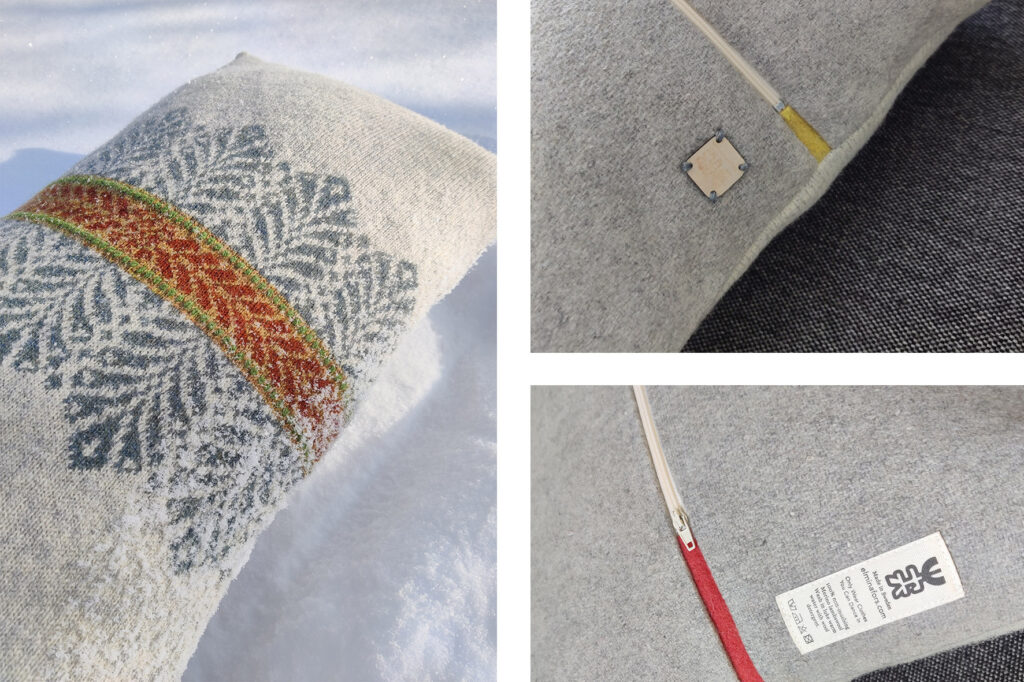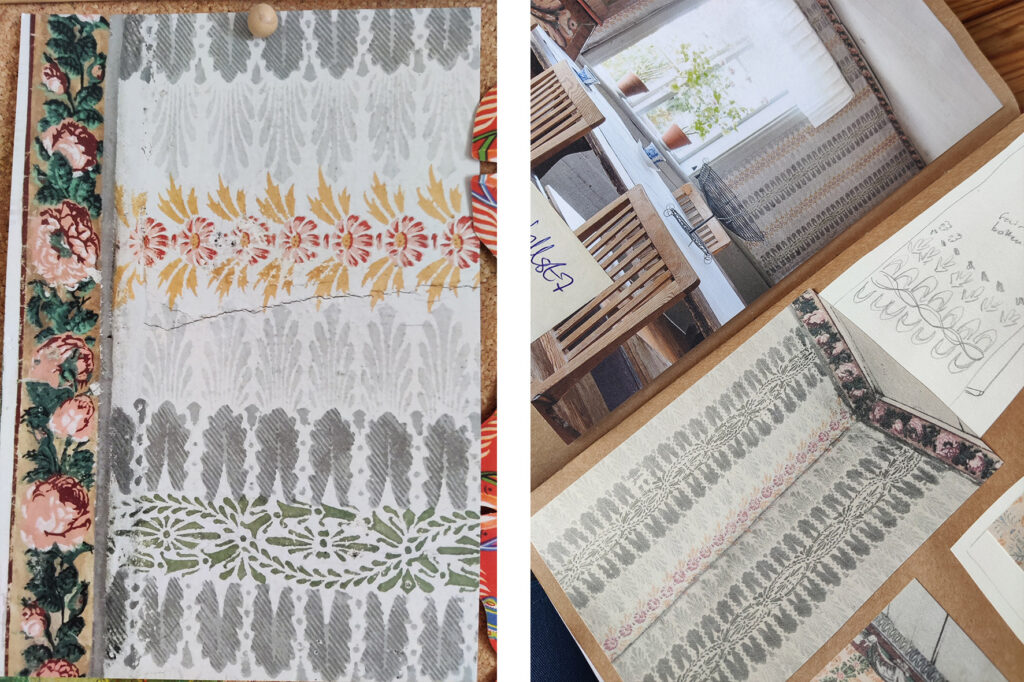
Around a year and a half ago I visited Gästgivars Hälsingegård, a UNESCO Heritage Site well known in these parts for the amazing hand printed walls covering two floors in one of the houses. Well worth a visit if you are travelling around Hälsingland – or visiting Sweden for that matter. Just a short drive (ca 3 hours) from Stockholm you can visit seven different decorated farmhouses around Hälsingland – all with different styles of paintings and hand printed wall papers. Gästgivars is maybe one of the most well known of these thanks to it’s well preserved festsal where they held parties in the village.
When one thinks of Swedish folk art, often it is the folk painting style of Kurbits (think Dala horse) that comes to mind, and the stark contrast colours that these have been painted with in recent times. Bright red, blue, yellow, green. But of course in a country as vast as Sweden there are endless styles of painting, of decorating. At Festsalen at Gästgivars Hälsingegård you find patterns, patterns and more patterns, all in a well selected color scheme that tie all the rooms together.
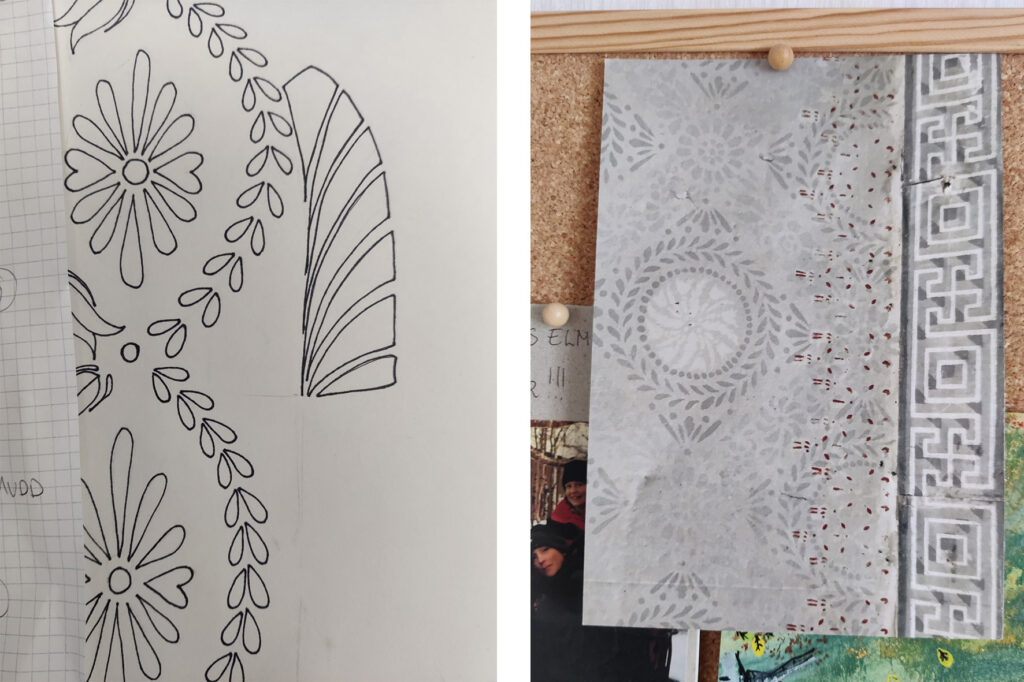
One big challenge with finding gorgeous patterns and pattern combinations is how to interpret them. At Gästgivars there are several rooms with different patterns – all hand printed using stencil cut outs by the stencil painter Jonas Wallström in the middle of the 19th century. What really surprised me was how borders with very different patterns was used without the overall look becoming too busy. In the images above you can see two of the rooms on the top floor of the house. Note the border with a different pattern. This border would run horisontally across the wall, against the ceiling.
So, how to interpret this wonderful craft and artistry into knitted textiles, a knitted pattern? How can one tie the patterns together from different rooms? How to translate into knitting technically?
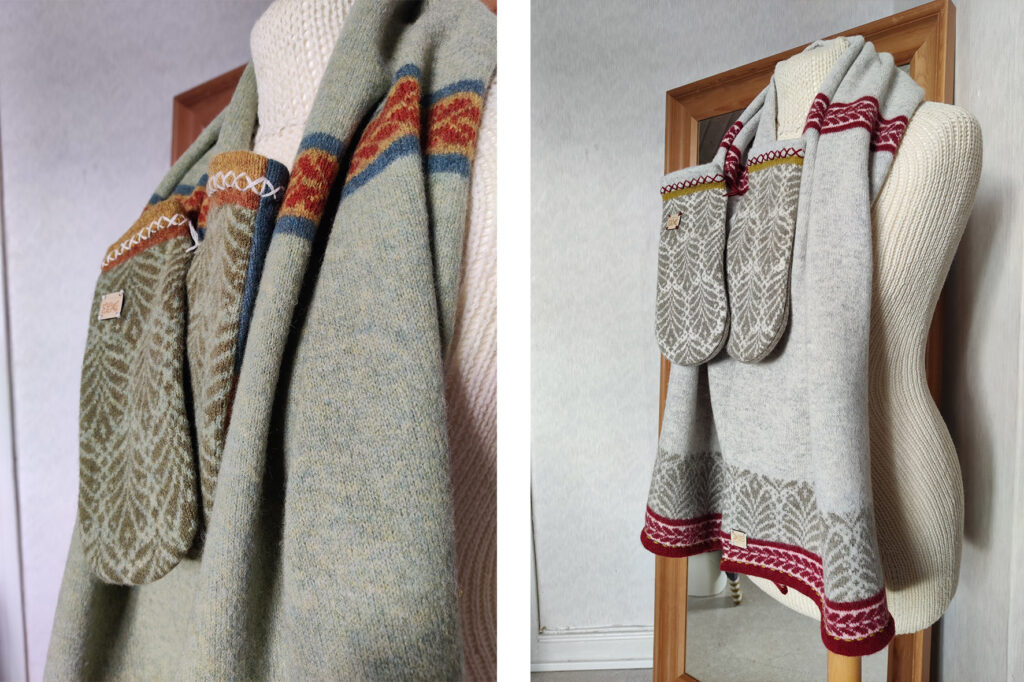
I chose to focus on two walls, the ones you see above. In the top image you can see leaves growing, stretching upwards and outwards. In the light grey wall av ring of leaves that almost look like knitted stitches. This became the pattern – running accross horisontally on the slightly felted Merino wool shawls and an all over pattern on the felted mittens. Because the colours of the actual walls are so beautiful and timeless these inspired the two colourways.
The pattern also became a knitted jumper and a knitted cushion cover – both made in 100% wool – both the slightly coarser Shetland wool and the soft Merino Wool.
Here you can find all knitwear with the Vallsta pattern.
Visit Gästgivars Hälsingegård – A beautiful place run by Pia & Bengt Ohlson. Lots of events on all year round and guided tours, a cafe and exhibition throughout the summer. A must to visit!
